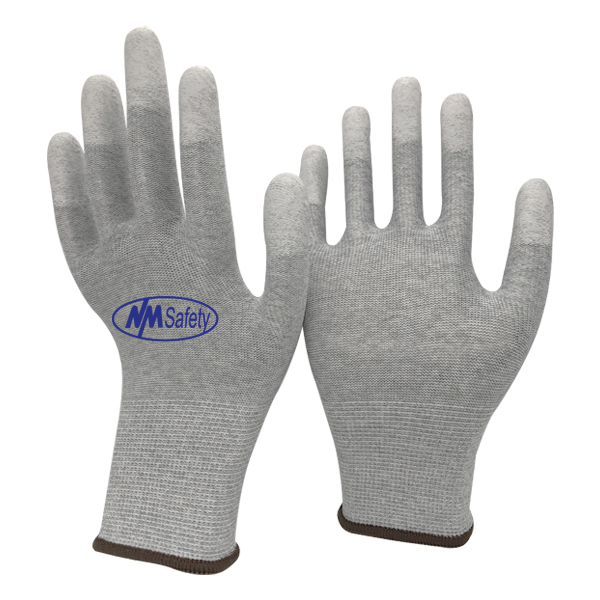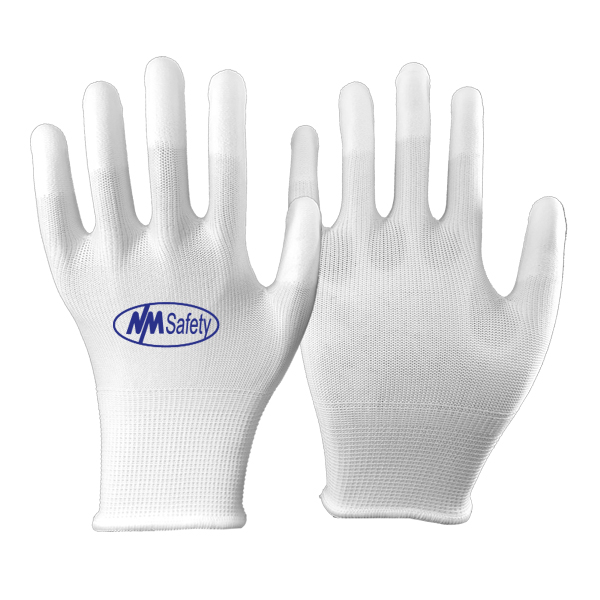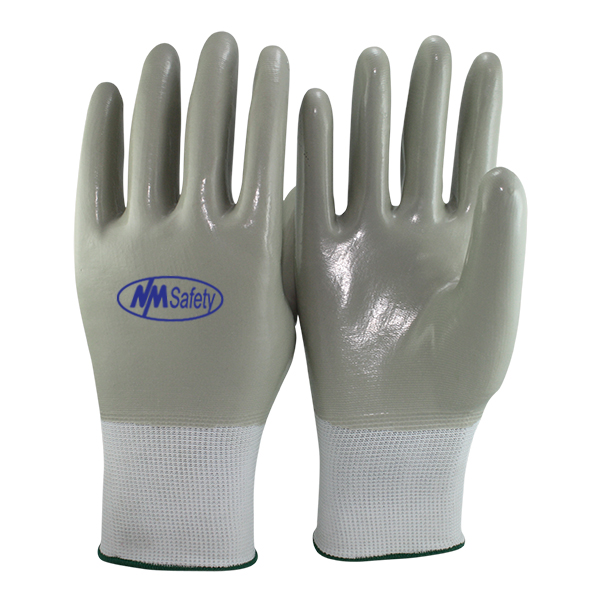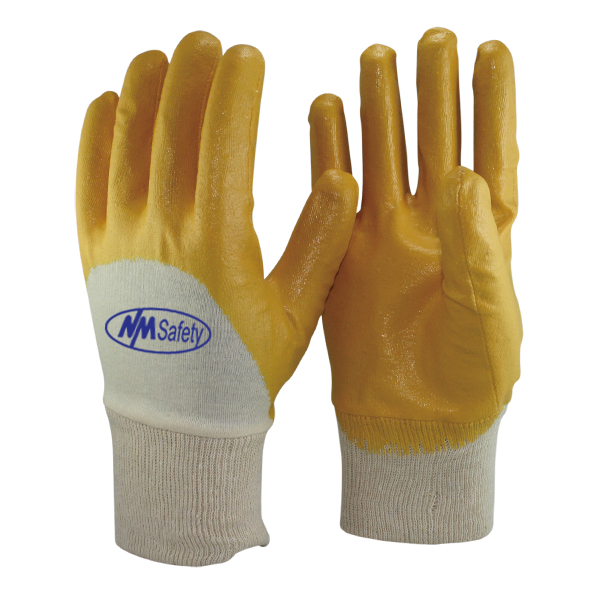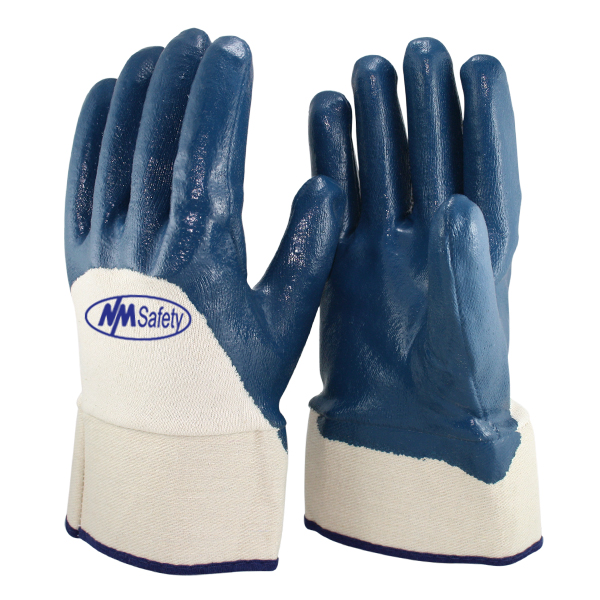What are Anti-static or ESD-Safe Gloves: Have you ever felt a small amount of electricity travel through your hand after touching someone's skin? The release of static energy that has accumulated in our bodies is known as electrostatic discharge, or "ESD." The small current of energy you feel when an electrostatic discharge occurs is static energy discharged at 3,500 volts. Nothing compares to what we're going through right now. You should wear ESD gloves when working with static-sensitive equipment or components, such as PC components or smartphone repairs.
ESD-Safe Gloves: Electronic products and staff are protected from the dangers of static electricity by wearing ESD gloves. Cleanrooms (microelectronics) and the electronics manufacturing industries benefit from electrostatic dissipative (ESD) gloves.
Anti-static gloves are often used in low humidity and particle-sensitive settings. Since static charges can destroy delicate electronic parts, ESD gloves are widely used when handling and assembling electronic gadgets.
ESD-Protected Gloves: What Are They and How Do They Work? ESD gloves are meant to protect static-sensitive electronic components, such as circuit boards, from damaging electric discharges.
ESD protection should be provided by static dissipative or conductive gloves. Electricity should be conducted or static electricity should be dissipated. To do this, these gloves are made up of a combination of soft synthetic fibres and conductive components. This improves the conductive qualities of the ESD gloves, preventing the formation of static electricity.
Anti-static gloves, like other anti-static gear like ESD-safe matting, can help to limit the risk of electrostatic discharge. As a result, you should wear a grounding wrist strap all of the time to keep electrostatic discharge to a minimum.
NMSafety's ESD gloves are low-cost, long-lasting, and of high quality. Optics, aerospace engineering, electronics, telecommunications, and the petrochemical industries all utilize antistatic gloves. They've been designed specifically for working with delicate films, electronic components, circuit boards, and precision equipment.
The ESD gloves from NMSafety will not impede the worker's dexterity or tactility in any way, and their materials are engineered to reduce and limit static charge build-up. Our antistatic gloves are dust-free and can be used in conjunction with antistatic wrist bands or on their own when working with electronic circuit boards, as both are equally effective.
Antistatic gloves: This term refers to the inability of a substance to become statically charged. As you move, friction between your clothing and another surface creates a static charge. This might be your body, other garments, or even the upholstery of the chair. You don't want these charges to accumulate. On the other hand, these charges must be discharged as soon as possible. It is the charge's potential discharge, not the charge itself, that is hazardous. Consider how you pull your fleece sweater over your head to remove it on a frigid winter day. In situations where there is a risk of explosion, this discharge produces sparks, which can be lethal.
Basics of Fingertips Coated Gloves: The ultimate goal of a Fingertips Coated glove is to eliminate static electricity in a specific work environment, such as when working with sensitive electronics or on a gas line. On the other hand, several Antistatic gloves manufacturers specify if a glove is suitable for handling or assembly. Handling gloves protect the operator's hands from contamination and injury, whereas assembly gloves protect sensitive objects from contamination and damage. Coated fingertip gloves should be considered essential safety equipment for most laboratories, cleanrooms, biotech, and electronic work. Fingertips coated gloves must, however, be used in conjunction with a grounding wrist strap to ensure the lowest potential risk of electrostatic discharge.
PU Fingertips Coated Gloves: Also known as polyurethane coated gloves, PU Fingertips coated gloves are a form of PU Flex Glove that is suited for work that requires precision, dexterity, and sensitivity. They're made of polyurethane foam with a nylon liner, which provides a comfortable and lightweight protection for your hands against abrasion and chemical hazards. PU Fingertips coated gloves are affordable, durable, and of high quality. In optics, aeronautical engineering, electronics, telecommunications, and the petrochemical industry, antistatic gloves are often employed. They've been designed specifically for handling delicate films, electronic components, circuit boards, and precise machinery.
When purchasing Fingertips Coated Gloves, keep the following in mind: Keep the following five things in mind when selecting a Fingertips coated Gloves solution for your company:
- Employee safety concerns, particularly if they are allergic to latex.
- Commonly detected chemicals in the workplace and how they may influence glove use.
- The overall goal of the glove (assembly versus handling).
- A glove's maximum electrical resistance.
- The cost of new gloves will rise over time.
Gloves with fingertip coating serve the following purposes: Have you ever felt a small quantity of energy or a stream of energy flow through your hand when you touched another person's skin? The release of static energy that has accumulated in our bodies is referred to as electrostatic discharge, or "ESD." The little current you feel is 3,500 volts of static energy being released when an electrostatic discharge occurs. We've never experienced anything like this before. It is advisable to use Fingertips Coated Gloves when working with static-sensitive equipment or components, such as PC components or smartphone repairs.
Is it safe to use polyurethane gloves?: Polyurethane is a typical form of polymeric polymer with a wide range of applications, including use as an adhesive and a material for gloves and other garments. Polyurethane can be made into a variety of shapes by adding catalysts, blowing agents, and flame retardants to the chemical makeup.
Conclusion: Antistatic gloves are suitable for any electronic assembly task involving skin contacts, such as handling microelectronics, PC and laptop repair, or assembly where ESD is a concern. Touching an electrostatic discharge (ESD) sensitive device, even if properly grounded, can result in a destructive discharge. Increasing the electrical channel's contact resistance is one way to slow down and regulate the discharge. Wearing anti-static gloves is a great way to do this. NMSafety offers the most affordable Fingertip coated gloves on the market.







